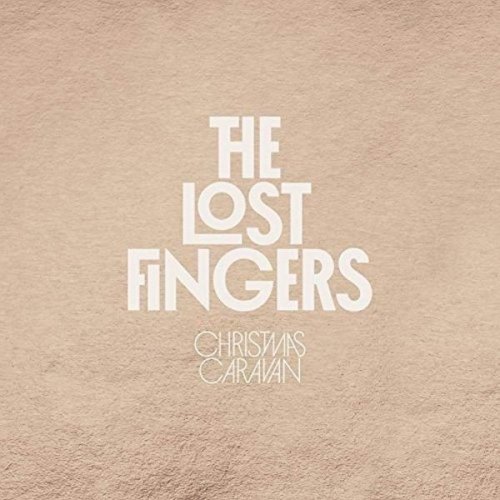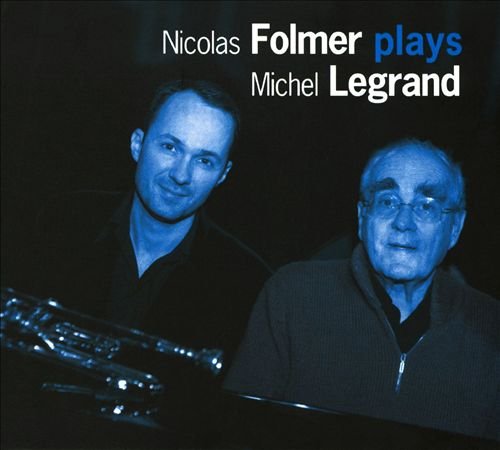Abbey Lincoln - It's Magic (2021, Reissue) LP
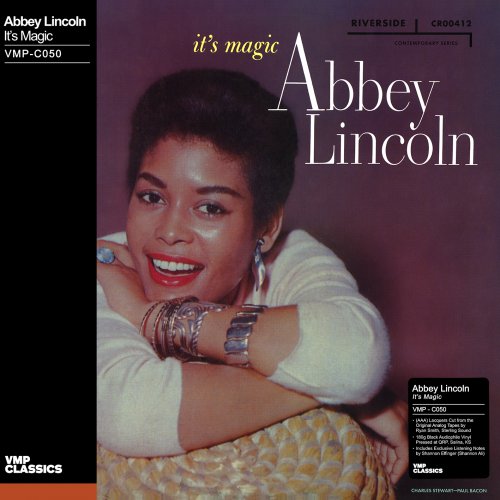
Artist: Abbey Lincoln
Title: It's Magic
Year Of Release: 2021
Label: Riverside Records (CR00412)
Genre: Vocal Jazz
Quality: FLAC (tracks) 24/192
Total Time: 00:37:07
Total Size: 1.41 GB
WebSite: Album Preview
Tracklist:Title: It's Magic
Year Of Release: 2021
Label: Riverside Records (CR00412)
Genre: Vocal Jazz
Quality: FLAC (tracks) 24/192
Total Time: 00:37:07
Total Size: 1.41 GB
WebSite: Album Preview
01. I Am in Love (Porter) - 2:50
02. It's Magic (Cahn-Styne) - 4:04
03. Just for Me (Komack) - 3:36
04. An Occasional Man (Blane-Martin) - 3:24
05. Ain't Nobody's Business (Trad.) - 4:27
06. Out of the Past (Hendricks-Golson) - 4:46
07. Music, Maestro, Please (Magidson-Wrubel) - 3:19
08. Exactly Like You (Fields-McHugh) - 2:41
09. Love (Blane-Martin) - 2:55
10. Little Niles (Hendricks-Weston) - 5:05
For Abbey Lincoln, there would be three distinct names that would definitively mark each period over the course of her life and career: Anna Marie Wooldridge was the young girl who idolized Billie Holiday, born in Chicago in 1930 and raised in rural Michigan; and later, Aminata Moseka, a woman in search of newfound direction and purpose in the early 1970s. Following her divorce from legendary drummer Max Roach, she traveled to Africa with her friend — South African great Miriam Makeba — and received the name at a ceremony held in Democratic Republic of the Congo. The latter name would prove epiphanic to her career, unveiling a then-burgeoning penchant for songwriting, as she would go on to pen roughly 40 original songs in her lifetime.
Somewhere in between, however, as far back as her early 20s, she met lyricist Bob Russell, who later became her manager, and soon bestowed her with the name Abbey Lincoln. A clever joining of Westminster Abbey with Abraham Lincoln, it would arguably take several decades before she would come into her own as “Abbey” — as both an artist and woman. Russell clearly recognized both her potential and the immense talent she had to offer, perhaps long before Lincoln could finally embrace them herself.
I had hoped to finally catch and meet Lincoln in 2007. She was billed as a headliner for the 15th Annual Charlie Parker Jazz Festival, held every August in both Harlem and the East Village. Arriving early at Tompkins Square Park, to ward off potential crowds and nab a seat close to the outdoor stage, I stood and sat for several hours in great anticipation of Lincoln’s arrival.
Still recuperating from an aortic valve replacement and bypass surgery performed earlier that year at St. Luke’s Hospital, it was later announced that Lincoln was too ill to perform and that Cassandra Wilson, at Lincoln’s personal request, had graciously stepped in to perform in her place. Though I admired Wilson’s talents as a vocalist, I couldn’t help but feel overcome by Lincoln’s inability to perform that night and would often wonder why I reacted so strongly for several years.
After numerous close listens of her albums, I not only believed that I knew her, but that she somehow knew me, too — from the unique timbre of her voice and her phrasing, to her delivery of her lyrics, idiosyncratic and conversational. Informed by the arc of her life’s journey, she imparted her wisdom and invaluable life lessons gained directly to me.
In her own songs, she managed to capture what love, life and self-discovery truly looked like for most of us — battle scars and all — sans the idyllic images often found in old standards. I just had to watch her perform, witness firsthand the woman whom I would come to worship and idolize, in hopes of marrying the image I created of her with the reality.
Years later, it became pretty apparent as to why I reacted so strongly that night. It wasn’t solely due to the fact that I had missed my chance to experience her perform, but that she was soon to become yet another jazz great — another ancestor — who would be immortalized solely through their body of work, leaving me no tangible connection to them: what made them who they were, what shaped their lives, what inspired their music.
Almost a year following that concert, I made the important decision to become a jazz critic, partly inspired by my desire to know the stories behind artists like Betty Carter and Abbey Lincoln, two women who would help shape my own identity in ways that are slowly revealing themselves to me, even today.
Charting Lincoln’s discography backwards lends deeper insight into the many artistic choices made throughout her career — either by herself or on her behalf. Not long after moving to New York City to pursue a music career alongside her burgeoning acting career, she met Max Roach in 1957 during her engagement at The Village Vanguard. It was Roach who first introduced Lincoln to the great Orrin Keepnews, a former journalist who, alongside Bill Grauer, had formed Riverside Records just four years earlier.
At its onset, the label largely reissued early jazz recordings from labels like Paramount Records, which featured legacy artists like Ma Rainey, King Oliver and Jelly Roll Morton. Based in Hell's Kitchen, soon after, the label’s focus shifted to producing jazz artists of the day, signing the late piano great Randy Weston — Max Roach’s schoolmate at Boys' High School in Bed-Stuy and, also, my childhood neighbor — as Riverside Records’ first artist.
The label eventually became home to the likes of Thelonious Monk, Cannonball Adderley, Coleman Hawkins, Wes Montgomery, Blue Mitchell and, for a time, Abbey Lincoln, among countless others. In his role as producer, Keepnews often fashioned himself more a “facilitator,” a guide with an adept hand at bringing out what was already there, rather than supplanting his vision with that of his artists’.
Similar to his role as a critic, in one of his early essays, he wrote that “our job is to create what is best described as ‘realism’ — the impression and effect of being real — which may be very different from plain unadorned reality.” Lincoln’s second album for Riverside, aptly titled It’s Magic, had Lincoln unknowingly exploring these sentiments raised by Keepnews as an artist straddled between what was true and what merely appeared to be true, thanks to the collision of her increasingly political jazz and her acting career.
Recorded in the weeks surrounding her 28th birthday, for It’s Magic’s cover, she opted for a more subdued look, abandoning her once-glamorous image first seen in her 1956 debut album Affair ... A Story of a Girl in Love (Liberty), and again in her first feature film cameo role in Jayne Mansfield’s The Girl Can’t Help It. In fact, for the latter, she famously wore a décolleté gown donned by Marilyn Monroe in 1953’s Gentlemen Prefer Blondes. Through her involvement with Roach, both personally and professionally, Lincoln quickly pivoted alongside the times, helping her to not only hone her jazz chops, but also shepherd her political awareness and activism through music, which we would both see and hear realized just two years later on Roach’s now-seminal We Insist! album (Candid).
While it was commendable for any artist to shift their career’s focus for the then-burgeoning Civil Rights Movement, in hindsight, it’s been hard not to wonder if Lincoln’s star power and potential were both stunted, and if it would have been more beneficial to her — and the resulting movement — had she simply stayed the course in her ascension to film stardom, given both her talent and promise as an actress.
Not counting her television appearances, Lincoln would only appear on the big screen three other times: in Michael Roemer’s Nothing But a Man (1964), marking her debut performance in one of the most telling cinematic portraits of Black American life in the ’60s; the 1968 romantic comedy For Love of Ivy, starring opposite Sidney Poitier, which earned her a Golden Globe nomination; and her final film appearance in Spike Lee’s Mo’ Better Blues (1990), his love letter to jazz in which Lincoln has a brief but memorable appearance as young Bleek’s mother, imploring him to continue to practice his scales on the trumpet. Difficult to know without having been there to witness this firsthand, it becomes pretty apparent that Lincoln dutifully followed Roach’s vision of more politicized jazz for much of their time together, temporarily halting her own natural self-discovery and growth as an artist.
Noticeably absent on It’s Magic, Roach is still very much a looming presence throughout, as Lincoln is backed by a stellar arsenal of his longtime musicians, including pianist Wynton Kelly (also the cousin of both Marcus Miller and Randy Weston), trumpeter Kenny Dorham, bassist Paul Chambers, trombonist Curtis Fuller and tenor great Benny Golson.
Lincoln’s interpretation of “I Am In Love” opens with an almost spoken and outright delivery of the lyric, alongside an uptempo rhythm on drums and a walking bass line, courtesy of “Philly” Joe Jones and Sam Jones, respectively: “I am dejected / I am depressed / Yet resurrected and sailing the crest / Why this elation, mixed with deflation? / What explanation? / I am in love.” Unlike other versions of the Cole Porter standard — notably those of Ella Fitzgerald and Nat King Cole, who both enter the tune following their musicians and, quite frankly, continue to compete to be heard alongside them — Lincoln’s vocals are never in competition with her group, ensuring that the meaning behind Porter’s lyrics does not get lost and is positioned out in front.
Contributing five of the album’s arrangements, Golson also shared one of his original compositions, “Out of the Past,” with lyrics penned by celebrated jazz vocalist and songwriter Jon Hendricks. Unlike the hard bop version Golson recorded as a leader the same year heard on The Modern Touch — which features the same players, but also trombonist J.J. Johnson and Roach — Lincoln’s haunting delivery is complemented with airtight precision. As Kelly enters on piano, Lincoln holds the note and elongates the word “out.” Soon you realize that the tune’s pace intentionally begins understated and slow paced, bringing out the most heft from Lincoln’s deliberate articulation and phrasing.
First introduced by Doris Day in her 1947 film debut Romance on the High Seas, “It’s Magic,” the album’s title track, was originally penned by Jule Styne and Sammy Cahn. Several renditions of the popular tune were both recorded and performed by artists such Sarah Vaughan, Tony Martin and Vic Damone; Day would even make this the theme song for her 1952 radio program The Doris Day Show. Lincoln’s version, however, starts with a slightly husky trill from Golson on tenor sax that soon opens up and begins to “dance,” setting her up well as she enters the tune, understated yet strong. Warmly supported by “Philly” Joe Jones on drums and Sam Jones on bass, Kelly’s piano and Art Farmer’s staccato flourishes on trumpet, this arrangement also feels comparable to her later years at Verve, backed by musicians who simply knew how to give her the thing she needed most in order to render not just the song, but also unearth the depth and meaning behind its lyrics. As seen here, Lincoln’s greatest strengths as a performer were how new she could make standards feel; they never sounded as impactful as when Lincoln was singing them.
The appearance of “Little Niles” is a stark yet welcome contrast, as the album is mostly standards. Penned by pianist Weston, the tune was inspired by his then-young son Niles, and would appear just one year later on an album of the same name, released by United Artists. As soon as Farmer quietly enters with soft yet lyrical touches, Lincoln’s rendering vacillates the most — mainly between high and low notes — as though it were written especially for her. Eschewing both the structure and timing heard on some of the album’s standards, the arrangement best allows for Lincoln to be her most free-spirited and playful.
Late last year, I began to take steps toward changing my own surname, in honor of my dad — a brilliant musician whose life and promise were cut short. This moment makes me feel even more connected to Abbey Lincoln. In the many different phases of life, whether as “Anna Marie” or “Aminata,” in the end, she would get to fully embrace being Abbey.
Though her life was full of starts and stops — great joys and many sacrifices — Lincoln never stopped the search for herself, ultimately writing compositions that offered just a mere yet telling glimpse of who she was and why what she had to say mattered. Hearing her on early recordings like It’s Magic, right at the cusp of her brilliant and prolific career, at long last, I’m finally getting to meet her.
Somewhere in between, however, as far back as her early 20s, she met lyricist Bob Russell, who later became her manager, and soon bestowed her with the name Abbey Lincoln. A clever joining of Westminster Abbey with Abraham Lincoln, it would arguably take several decades before she would come into her own as “Abbey” — as both an artist and woman. Russell clearly recognized both her potential and the immense talent she had to offer, perhaps long before Lincoln could finally embrace them herself.
I had hoped to finally catch and meet Lincoln in 2007. She was billed as a headliner for the 15th Annual Charlie Parker Jazz Festival, held every August in both Harlem and the East Village. Arriving early at Tompkins Square Park, to ward off potential crowds and nab a seat close to the outdoor stage, I stood and sat for several hours in great anticipation of Lincoln’s arrival.
Still recuperating from an aortic valve replacement and bypass surgery performed earlier that year at St. Luke’s Hospital, it was later announced that Lincoln was too ill to perform and that Cassandra Wilson, at Lincoln’s personal request, had graciously stepped in to perform in her place. Though I admired Wilson’s talents as a vocalist, I couldn’t help but feel overcome by Lincoln’s inability to perform that night and would often wonder why I reacted so strongly for several years.
After numerous close listens of her albums, I not only believed that I knew her, but that she somehow knew me, too — from the unique timbre of her voice and her phrasing, to her delivery of her lyrics, idiosyncratic and conversational. Informed by the arc of her life’s journey, she imparted her wisdom and invaluable life lessons gained directly to me.
In her own songs, she managed to capture what love, life and self-discovery truly looked like for most of us — battle scars and all — sans the idyllic images often found in old standards. I just had to watch her perform, witness firsthand the woman whom I would come to worship and idolize, in hopes of marrying the image I created of her with the reality.
Years later, it became pretty apparent as to why I reacted so strongly that night. It wasn’t solely due to the fact that I had missed my chance to experience her perform, but that she was soon to become yet another jazz great — another ancestor — who would be immortalized solely through their body of work, leaving me no tangible connection to them: what made them who they were, what shaped their lives, what inspired their music.
Almost a year following that concert, I made the important decision to become a jazz critic, partly inspired by my desire to know the stories behind artists like Betty Carter and Abbey Lincoln, two women who would help shape my own identity in ways that are slowly revealing themselves to me, even today.
Charting Lincoln’s discography backwards lends deeper insight into the many artistic choices made throughout her career — either by herself or on her behalf. Not long after moving to New York City to pursue a music career alongside her burgeoning acting career, she met Max Roach in 1957 during her engagement at The Village Vanguard. It was Roach who first introduced Lincoln to the great Orrin Keepnews, a former journalist who, alongside Bill Grauer, had formed Riverside Records just four years earlier.
At its onset, the label largely reissued early jazz recordings from labels like Paramount Records, which featured legacy artists like Ma Rainey, King Oliver and Jelly Roll Morton. Based in Hell's Kitchen, soon after, the label’s focus shifted to producing jazz artists of the day, signing the late piano great Randy Weston — Max Roach’s schoolmate at Boys' High School in Bed-Stuy and, also, my childhood neighbor — as Riverside Records’ first artist.
The label eventually became home to the likes of Thelonious Monk, Cannonball Adderley, Coleman Hawkins, Wes Montgomery, Blue Mitchell and, for a time, Abbey Lincoln, among countless others. In his role as producer, Keepnews often fashioned himself more a “facilitator,” a guide with an adept hand at bringing out what was already there, rather than supplanting his vision with that of his artists’.
Similar to his role as a critic, in one of his early essays, he wrote that “our job is to create what is best described as ‘realism’ — the impression and effect of being real — which may be very different from plain unadorned reality.” Lincoln’s second album for Riverside, aptly titled It’s Magic, had Lincoln unknowingly exploring these sentiments raised by Keepnews as an artist straddled between what was true and what merely appeared to be true, thanks to the collision of her increasingly political jazz and her acting career.
Recorded in the weeks surrounding her 28th birthday, for It’s Magic’s cover, she opted for a more subdued look, abandoning her once-glamorous image first seen in her 1956 debut album Affair ... A Story of a Girl in Love (Liberty), and again in her first feature film cameo role in Jayne Mansfield’s The Girl Can’t Help It. In fact, for the latter, she famously wore a décolleté gown donned by Marilyn Monroe in 1953’s Gentlemen Prefer Blondes. Through her involvement with Roach, both personally and professionally, Lincoln quickly pivoted alongside the times, helping her to not only hone her jazz chops, but also shepherd her political awareness and activism through music, which we would both see and hear realized just two years later on Roach’s now-seminal We Insist! album (Candid).
While it was commendable for any artist to shift their career’s focus for the then-burgeoning Civil Rights Movement, in hindsight, it’s been hard not to wonder if Lincoln’s star power and potential were both stunted, and if it would have been more beneficial to her — and the resulting movement — had she simply stayed the course in her ascension to film stardom, given both her talent and promise as an actress.
Not counting her television appearances, Lincoln would only appear on the big screen three other times: in Michael Roemer’s Nothing But a Man (1964), marking her debut performance in one of the most telling cinematic portraits of Black American life in the ’60s; the 1968 romantic comedy For Love of Ivy, starring opposite Sidney Poitier, which earned her a Golden Globe nomination; and her final film appearance in Spike Lee’s Mo’ Better Blues (1990), his love letter to jazz in which Lincoln has a brief but memorable appearance as young Bleek’s mother, imploring him to continue to practice his scales on the trumpet. Difficult to know without having been there to witness this firsthand, it becomes pretty apparent that Lincoln dutifully followed Roach’s vision of more politicized jazz for much of their time together, temporarily halting her own natural self-discovery and growth as an artist.
Noticeably absent on It’s Magic, Roach is still very much a looming presence throughout, as Lincoln is backed by a stellar arsenal of his longtime musicians, including pianist Wynton Kelly (also the cousin of both Marcus Miller and Randy Weston), trumpeter Kenny Dorham, bassist Paul Chambers, trombonist Curtis Fuller and tenor great Benny Golson.
Lincoln’s interpretation of “I Am In Love” opens with an almost spoken and outright delivery of the lyric, alongside an uptempo rhythm on drums and a walking bass line, courtesy of “Philly” Joe Jones and Sam Jones, respectively: “I am dejected / I am depressed / Yet resurrected and sailing the crest / Why this elation, mixed with deflation? / What explanation? / I am in love.” Unlike other versions of the Cole Porter standard — notably those of Ella Fitzgerald and Nat King Cole, who both enter the tune following their musicians and, quite frankly, continue to compete to be heard alongside them — Lincoln’s vocals are never in competition with her group, ensuring that the meaning behind Porter’s lyrics does not get lost and is positioned out in front.
Contributing five of the album’s arrangements, Golson also shared one of his original compositions, “Out of the Past,” with lyrics penned by celebrated jazz vocalist and songwriter Jon Hendricks. Unlike the hard bop version Golson recorded as a leader the same year heard on The Modern Touch — which features the same players, but also trombonist J.J. Johnson and Roach — Lincoln’s haunting delivery is complemented with airtight precision. As Kelly enters on piano, Lincoln holds the note and elongates the word “out.” Soon you realize that the tune’s pace intentionally begins understated and slow paced, bringing out the most heft from Lincoln’s deliberate articulation and phrasing.
First introduced by Doris Day in her 1947 film debut Romance on the High Seas, “It’s Magic,” the album’s title track, was originally penned by Jule Styne and Sammy Cahn. Several renditions of the popular tune were both recorded and performed by artists such Sarah Vaughan, Tony Martin and Vic Damone; Day would even make this the theme song for her 1952 radio program The Doris Day Show. Lincoln’s version, however, starts with a slightly husky trill from Golson on tenor sax that soon opens up and begins to “dance,” setting her up well as she enters the tune, understated yet strong. Warmly supported by “Philly” Joe Jones on drums and Sam Jones on bass, Kelly’s piano and Art Farmer’s staccato flourishes on trumpet, this arrangement also feels comparable to her later years at Verve, backed by musicians who simply knew how to give her the thing she needed most in order to render not just the song, but also unearth the depth and meaning behind its lyrics. As seen here, Lincoln’s greatest strengths as a performer were how new she could make standards feel; they never sounded as impactful as when Lincoln was singing them.
The appearance of “Little Niles” is a stark yet welcome contrast, as the album is mostly standards. Penned by pianist Weston, the tune was inspired by his then-young son Niles, and would appear just one year later on an album of the same name, released by United Artists. As soon as Farmer quietly enters with soft yet lyrical touches, Lincoln’s rendering vacillates the most — mainly between high and low notes — as though it were written especially for her. Eschewing both the structure and timing heard on some of the album’s standards, the arrangement best allows for Lincoln to be her most free-spirited and playful.
Late last year, I began to take steps toward changing my own surname, in honor of my dad — a brilliant musician whose life and promise were cut short. This moment makes me feel even more connected to Abbey Lincoln. In the many different phases of life, whether as “Anna Marie” or “Aminata,” in the end, she would get to fully embrace being Abbey.
Though her life was full of starts and stops — great joys and many sacrifices — Lincoln never stopped the search for herself, ultimately writing compositions that offered just a mere yet telling glimpse of who she was and why what she had to say mattered. Hearing her on early recordings like It’s Magic, right at the cusp of her brilliant and prolific career, at long last, I’m finally getting to meet her.
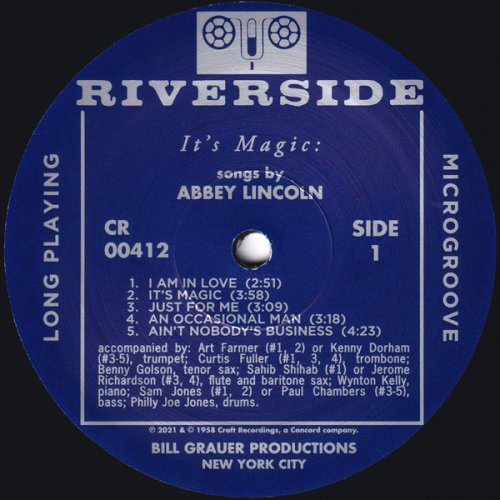
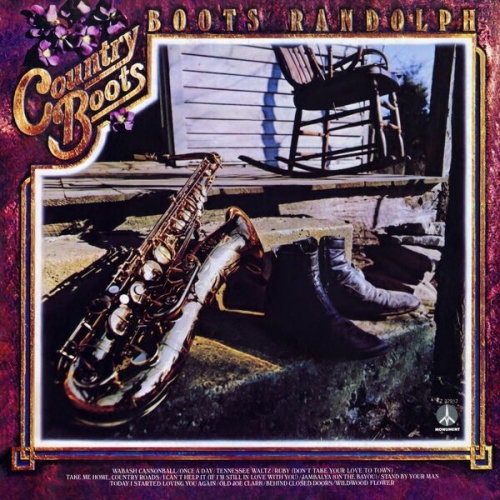
![Nighthawks - Paris Dakar (2025) [Hi-Res] Nighthawks - Paris Dakar (2025) [Hi-Res]](https://www.dibpic.com/uploads/posts/2025-12/1767093398_folder.jpg)
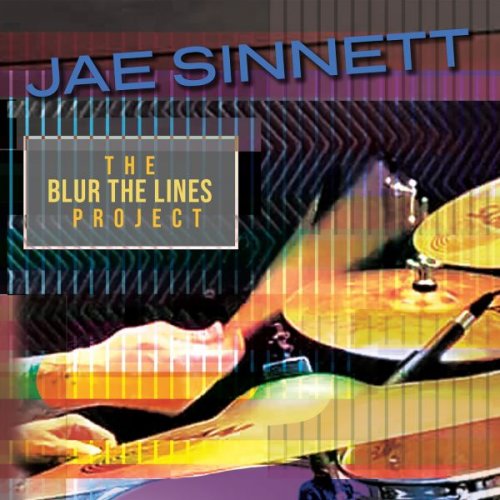
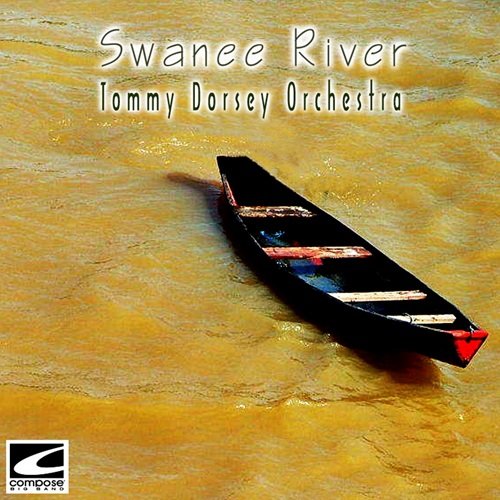
![Limotges - The Burt Bacharach Songbook (2025) [Hi-Res] Limotges - The Burt Bacharach Songbook (2025) [Hi-Res]](https://www.dibpic.com/uploads/posts/2025-12/1766823472_l6enc3v4rcqoc_600.jpg)
